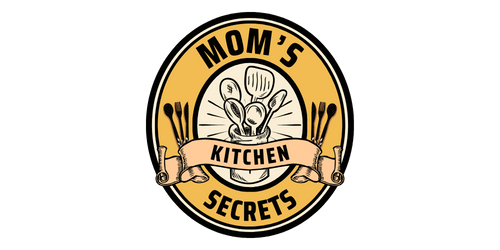Are you tired of always cooking the same dishes and want to expand your culinary skills? Look no further! In this article, you will find a comprehensive breakdown of the most popular cooking techniques, giving you the knowledge and confidence to master various cooking methods. From sautéing to braising, grilling to baking, you will learn the secrets behind each technique, allowing you to unleash your inner chef and create delicious meals that will impress family and friends. So, put on your apron, sharpen your knives, and let’s explore the wonderful world of cooking together!

Grilling
Grilling is a beloved cooking technique that is perfect for outdoor gatherings and sunny days. It involves cooking food directly over an open flame or hot coals. This method imparts a delicious smoky flavor and beautiful grill marks on the food. There are two main types of grilling: direct grilling and indirect grilling.
Direct Grilling
Direct grilling is the most common and straightforward grilling technique. It involves placing the food directly over the heat source, be it gas burners or charcoal. This method is ideal for quick-cooking foods such as burgers, steaks, kebabs, and vegetables. The high heat sears the exterior of the food, locking in the juices while creating a nice char.
To achieve optimal results when direct grilling, it’s crucial to preheat the grill and keep a close eye on the food. You’ll want to flip the food halfway through the cooking process to ensure even doneness. Direct grilling is a versatile technique that allows you to grill a wide range of ingredients, making it perfect for casual get-togethers and weeknight dinners.
Indirect Grilling
Indirect grilling is a slower and more gentle cooking method that involves placing the food away from the direct heat source. This technique is perfect for larger cuts of meat, such as whole chickens, roasts, and racks of ribs. By cooking the food indirectly, you can achieve a more evenly cooked interior and a beautiful, crispy exterior.
To use the indirect grilling technique, you’ll want to create two zones on your grill. On one side, place the hot coals or lit burners, and on the other side, leave it empty of heat. This allows for a gradual cooking process, as the food is not directly exposed to the heat source. It’s important to monitor the temperature throughout the cooking process and adjust the heat as needed.
Grilling Techniques for Different Foods
When it comes to grilling, different foods require different techniques to ensure optimal flavor and texture. Here are some grilling techniques for a variety of ingredients:
- Burgers: Start with high heat for a seared exterior, then move to indirect heat to cook the interior thoroughly.
- Steaks: Start with direct heat for a quick sear, then lower the heat or move to indirect heat for further cooking to your desired doneness.
- Chicken: Use indirect heat to cook the chicken through without burning the skin. You can finish it with a quick sear over direct heat for crispy skin.
- Fish: Grill fish fillets on a well-oiled grate over medium-high heat, roughly 4-5 minutes per side, depending on the thickness of the fillet.
- Vegetables: Toss vegetables with olive oil and seasonings, then grill over medium-high heat until crisp-tender with beautiful grill marks.
Experimenting with different grilling techniques will help you unlock the full potential of your favorite ingredients and elevate your outdoor cooking game!
Baking
Baking is a versatile cooking technique that is commonly used for a wide range of delicious treats, from cookies and cakes to bread and pastries. It involves cooking food in a dry heat environment, typically inside an oven. There are various baking techniques, each serving a specific purpose and yielding different results.
Convection Baking
Convection baking is a modern twist on traditional baking. It involves using an oven equipped with a fan that circulates hot air evenly throughout the cooking chamber. This technique ensures a more even cooking and browning of the food. Convection baking is perfect for cookies, pastries, and other delicate baked goods that require a crisp exterior and a light, fluffy interior.
When convection baking, you’ll typically need to adjust the cooking time and temperature. It’s advisable to reduce the temperature by 25 degrees Fahrenheit and keep a close eye on the food to avoid overcooking or burning. Convection baking is a fantastic option for those who enjoy baking frequently and desire consistent and reliable results.
Traditional Baking
Traditional baking, also known as conventional baking, is the classic method most of us are familiar with. It involves using a standard oven without a convection fan. Traditional baking provides a gentle and slow heat distribution, allowing the food to cook slowly and evenly from the outside in. This technique is ideal for cakes, bread, and other recipes that require a more moist and tender texture.
When using the traditional baking method, it is essential to follow the recipe instructions carefully and preheat the oven to the specified temperature. This will ensure proper rising and even cooking. Traditional baking is a timeless technique that has been passed down through generations, resulting in comforting and nostalgic baked goods.
Roasting
Roasting is a cooking technique that involves cooking food in an oven or over an open flame for an extended period. This method is often used for larger cuts of meat, vegetables, and even fruits. Roasting allows the food to cook slowly and evenly, resulting in a deliciously tender interior and a crispy exterior.
Dry Roasting
Dry roasting refers to cooking food without the addition of any liquid or fat. It is ideal for tender cuts of meat that have natural moisture in them. Dry roasting is commonly used for roasts, such as a whole chicken, beef tenderloin, or pork loin. The cooking process creates a flavorful crust on the outside while sealing in the natural juices for a moist and flavorful interior.
When dry roasting, it’s essential to season the food generously with salt, pepper, and any desired herbs or spices. Preheat the oven to the recommended temperature and allow the food to rest after cooking to retain its juiciness. Dry roasting is a straightforward yet impressive technique that is perfect for special occasions and holiday feasts.
Moist Roasting
Moist roasting, also known as braising, involves cooking food in a covered dish with a small amount of liquid. This method is best suited for tougher cuts of meat that require longer cooking times to become tender. Moist roasting is perfect for pot roasts, stews, and casseroles, as it results in rich, flavorful dishes with tender meat and a delicious sauce.
To moist roast, start by browning the meat in a hot pan to develop a deep caramelized flavor. Then transfer the meat to a covered dish, add liquids such as broth or wine, and cook at a low temperature for an extended period. The slow cooking process breaks down the tough connective tissues in the meat, resulting in a melt-in-your-mouth texture.
Rotisserie Roasting
Rotisserie roasting is a classic technique that involves cooking food on a rotating spit over an open fire or inside a specially designed rotisserie oven. This method ensures even cooking and browning of the food while allowing the excess fat to drip away, resulting in a juicy and flavorful end product.
Rotisserie roasting is commonly used for whole chickens, turkeys, and large cuts of meat. The rotation of the spit continuously bastes the food, keeping it moist and tender. This technique requires a bit of time and equipment, but the results are well worth the effort. Rotisserie roasting adds a touch of theater to your cooking and creates impressive flavors that will be the highlight of any meal.

Boiling
Boiling is a simple yet fundamental cooking technique that involves cooking food in liquid at a constant, high temperature. This method is commonly used for pastas, vegetables, and grains. Boiling allows the ingredients to cook quickly and evenly while retaining their shape, color, and nutrients.
Boiling Techniques for Pasta
When boiling pasta, it’s important to use a large pot with plenty of water to allow the pasta to move freely as it cooks. Bring the water to a rolling boil, add salt, and then carefully add the pasta. Stir the pasta occasionally to prevent sticking and cook according to the package instructions until al dente, meaning it has a slight bite to it.
Once the pasta is cooked, drain it in a colander and rinse it briefly with cool water to stop the cooking process. From there, you can toss the pasta with your favorite sauce or incorporate it into a variety of pasta dishes. Boiling pasta is a simple and versatile technique that allows you to create endless delicious pasta creations.
Simmering
Simmering is a gentle boiling technique that involves cooking food in liquid at a lower temperature. This method is perfect for creating flavorful soups, stews, and braises. Simmering allows the ingredients to cook slowly while allowing the flavors to meld together and intensify.
When simmering, it’s important to maintain a constant, low heat and avoid reaching a rolling boil. This will prevent the food from becoming tough or overcooked. Simmering is a patient and forgiving technique that allows you to develop complex flavors and tender textures in your dishes.
Blanching
Blanching is a boiling technique commonly used for vegetables and fruits. It involves briefly cooking the ingredients in boiling water or steam and then immediately transferring them to ice water to halt the cooking process. Blanching helps maintain the vibrant colors, crispness, and textures of the food while slightly tenderizing it.
To blanch vegetables, bring a pot of water to a rolling boil, add salt if desired, and carefully add the vegetables. Cook them for a short period, typically 1-2 minutes, then transfer them to a bowl of ice water. Blanching is a great technique to use when preserving vegetables for later use or when preparing ingredients for stir-fries, salads, or other recipes that require a quick cooking time.
Steaming
Steaming is a gentle and healthy cooking technique that involves cooking food with steam rather than submerging it in water or exposing it to direct heat. This method preserves the natural flavors, colors, and nutrients of the ingredients while producing tender and moist results.
Traditional Steaming
Traditional steaming is done by placing food in a steamer basket or a perforated tray above boiling water. The steam generated from the water cooks the food to perfection. Steaming is ideal for delicate items such as fish, shellfish, dumplings, and vegetables. It is also a great option for individuals who prefer oil-free cooking.
When traditional steaming, it’s important to ensure that the water doesn’t touch the food. The timing will vary depending on the thickness and type of food being steamed, so it’s crucial to follow the recommended cooking times. Steaming allows the food to retain its shape, texture, and nutritional value, making it a fantastic choice for health-conscious individuals.
Pressure Steaming
Pressure steaming involves using a special pressure cooker that generates steam under high pressure. This method reduces cooking time significantly and tenderizes tough cuts of meat while infusing them with flavor. Pressure steaming is perfect for roasts, stews, and dishes that require long cooking times but lack the luxury of time.
When pressure steaming, it’s important to follow the manufacturer’s instructions and ensure that the pressure cooker is properly sealed. This will prevent any accidents and ensure efficient and safe cooking. Pressure steaming is a convenient and efficient technique that allows you to enjoy flavorful and tender meals in a fraction of the usual time.
Steam-based Cooking Appliances
In addition to traditional steamers, there are various steam-based cooking appliances available on the market today. These appliances, such as steam ovens and steamers with added functionalities, offer more precise control and versatility in steaming.
Steam ovens allow you to precisely control the temperature and humidity, making it easier to achieve the desired results for a wide range of dishes. They can be used for anything from steamed vegetables and fish to baking bread and making perfectly poached eggs.
Steamers with added functionalities may include options like variable steam levels, multi-tiered compartments, and even settings for specific food types. These appliances provide convenience and flexibility, allowing you to steam multiple dishes simultaneously or experiment with different steaming techniques.

Sautéing and Stir-Frying
Sautéing and stir-frying are high-heat cooking techniques that involve quickly cooking small pieces of food in a hot pan with a small amount of oil. These methods allow for the development of intense flavors and textures while preserving the natural colors and nutrients of the ingredients.
Sautéing vs Stir-Frying
Sautéing and stir-frying are similar techniques, but they differ in the type of cookware and the ingredients used. Sautéing is typically done in a wide, shallow pan, while stir-frying is done in a wok or a similar deep, rounded skillet. Sautéing often involves cooking meat, vegetables, or a combination of both, while stir-frying is commonly associated with Asian cuisine and uses higher heat and more rapid stirring.
Both techniques require using high heat and tossing the ingredients quickly to ensure even cooking and prevent burning. The key to successful sautéing and stir-frying is to have all the ingredients prepped and ready to go, as the cooking process is fast and requires constant attention.
Sautéing Techniques
To sauté, start by heating a small amount of oil or butter in a pan over medium-high heat. Once the oil is hot, add the ingredients to the pan, ensuring they’re evenly spread out. Use a spatula or tongs to quickly toss and flip the ingredients, ensuring they cook evenly on all sides. Sautéing is perfect for cooking thinly sliced meats, vegetables, and even fruits.
Keep in mind that over-crowding the pan will result in steaming rather than sautéing, so it’s important to cook in smaller batches if needed. The cooking time will vary depending on the ingredients and desired doneness, so it’s essential to monitor them closely.
Stir-Frying Techniques
To stir-fry, you’ll want to heat a wok or a deep skillet over high heat until it’s smoking hot. Add a small amount of oil and quickly add the ingredients, starting with the aromatics like garlic and ginger, followed by the meat or vegetables. Use a spatula or a pair of long chopsticks to continuously toss and stir the ingredients throughout the cooking process. The intense heat and constant movement result in crispy yet tender ingredients.
Stir-frying is best suited for bite-sized pieces of meat, poultry, seafood, and a variety of vegetables. The key to successful stir-frying is to keep the ingredients moving constantly and to cook them in small batches, allowing each piece to come in contact with the hot surface of the wok.
Braising and Stewing
Braising and stewing are slow cooking techniques that involve cooking food in a flavorful liquid over low heat for an extended period. These methods are ideal for tough cuts of meat and produce tender, moist, and flavorful results.
Braising Techniques
Braising is a two-step cooking process that involves searing the meat over high heat to develop a rich flavor and then slowly simmering it in a liquid until it becomes tender and succulent. The liquid used can vary from stock and wine to sauces and aromatic mixtures.
To braise, start by searing the meat on all sides in a hot pan with a small amount of oil. This will create a flavorful crust and seal in the juices. Then transfer the meat to a pot or a Dutch oven and add the desired liquid, along with any vegetables and seasonings. Cover the pot and simmer the meat on low heat until it reaches the desired tenderness.
Braising is perfect for tougher cuts of meat such as beef chuck, pork shoulder, and lamb shanks. The slow and gentle cooking process breaks down the connective tissues and transforms the tough meat into a melt-in-your-mouth delight. The resulting liquid can be reduced and used as a flavorful sauce to accompany the dish.
Stewing Techniques
Stewing is similar to braising but involves cooking the ingredients entirely submerged in liquid. This technique creates a hearty and flavorful dish with tender meat, vegetables, and a rich sauce. Stews are commonly prepared using a combination of meat, root vegetables, aromatic ingredients, and a flavorful liquid such as stock, wine, or tomato sauce.
To stew, start by searing the meat in a hot pan to develop a caramelized crust. Then transfer the meat, along with any other ingredients, to a pot or a slow cooker. Add the liquid and seasonings, ensuring that the ingredients are fully covered. Cover the pot and simmer on low heat or use a slow cooker for an extended period until the meat and vegetables are tender and the flavors have melded together.
Stewing is a fantastic technique for creating comforting and heartwarming dishes such as beef stew, chicken casserole, and hearty vegetable soups. The slow cooking process allows the flavors to develop and intensify, resulting in a delightful meal that is perfect for chilly nights or family gatherings.
Slow Cooking Methods
Both braising and stewing can also be accomplished using a slow cooker or a multicooker, such as an Instant Pot. These appliances provide convenience and allow for hands-off cooking. Simply sear the meat as directed and transfer all the ingredients to the slow cooker or multicooker. Set the desired cooking time and temperature, and let the appliance work its magic.
Slow cooking methods are perfect for busy individuals who want to enjoy a delicious and tender meal without constant monitoring. The long, slow cooking process allows you to set it and forget it while still enjoying flavorful and tender results.

Griddling
Griddling is a versatile cooking technique that involves cooking food on a flat surface, typically a griddle or a grill pan. This method allows for even heat distribution and consistent browning. Griddling is ideal for a wide range of ingredients, from breakfast favorites to sandwiches and beyond.
Flat-Top Griddling
Flat-top griddling, also known as plancha cooking, involves heating a smooth, flat surface to a moderate to high heat. This technique is perfect for cooking delicate foods that require even heat and quick cooking, such as pancakes, eggs, and seafood.
To flat-top griddle, preheat the surface until it’s hot, then lightly oil it to prevent sticking. Add the ingredients and cook until they have achieved the desired color and texture. The even heat distribution of the griddle ensures consistent and professional-looking results.
Slotted Griddling
Slotted griddling is a technique that involves cooking food on a griddle with slots, allowing excess fat and liquids to drain away. This method is commonly used for cooking burgers, sausages, and other fatty foods.
To slotted griddle, preheat the griddle until it’s hot, then place the ingredients on the slotted surface. As the food cooks, the fat drips through the slots, resulting in a healthier end product. Slotted griddling is an excellent option for individuals who want to enjoy delicious grilled favorites without excessive grease.
Griddling for Different Foods
Griddling is a versatile technique that allows you to cook a wide variety of ingredients with ease. Here are a few examples of foods that can be griddled:
- Pancakes: Griddle pancakes on a hot surface with a small amount of oil or butter for a perfectly golden and fluffy breakfast treat.
- Paninis: Grill paninis on a hot griddle with gentle pressure to create beautiful grill marks and a crispy exterior.
- Vegetables: Toss thinly sliced vegetables with oil, salt, and pepper, and cook them on a griddle until tender and slightly charred.
- Bacon: Lay strips of bacon on a hot griddle and cook until crispy and golden brown, then transfer them to paper towels to absorb excess grease.
Griddling is a fantastic way to achieve delicious and visually appealing results with minimal effort. Whether you’re griddling breakfast items, sandwiches, or vegetables, this versatile technique is sure to impress your taste buds.
Deep-Frying
Deep-frying is a cooking technique that involves immersing food in hot oil until it reaches a crispy and golden brown texture. This method is commonly used for making indulgent treats like french fries, fried chicken, and doughnuts. While deep-frying may seem intimidating, with proper safety precautions, it can be a fun and delicious cooking technique to explore.
Classic Deep-Frying
Classic deep-frying requires a pot or deep fryer filled with oil heated to a specific temperature. The type of oil used can vary depending on the desired flavor and smoke point. Common choices include vegetable, peanut, and canola oil.
To deep-fry, start by heating the oil to the recommended temperature, usually around 350-375 degrees Fahrenheit. Carefully lower the food into the hot oil using tongs or a slotted spoon to prevent splattering. Cook the food until it becomes golden brown and crispy, then transfer it to a paper towel-lined plate to drain any excess oil.
Classic deep-frying requires attention and caution, as hot oil can cause severe burns if mishandled. It’s important to monitor the temperature of the oil, avoid overcrowding the pot, and use appropriate tools to handle the food. Practice good kitchen safety, and enjoy the crispy and delicious results of deep-frying.
Air-Frying
Air-frying is a healthier alternative to classic deep-frying that uses hot air to cook the food rather than oil. This technique involves using an air fryer, a countertop appliance that circulates hot air around the food, resulting in a crispy exterior without excessive oil.
To air-fry, preheat the air fryer to the recommended temperature and lightly coat the food with a small amount of oil or cooking spray. Place the food in a single layer in the air fryer basket or tray, making sure there is enough space for the hot air to circulate. Cook the food according to the recipe instructions, flipping or shaking it midway through for even cooking.
Air-frying allows you to indulge in your favorite crispy treats with significantly less oil and fewer calories. While the results may not be identical to deep-fried foods, air-frying provides a healthier and convenient alternative that can still satisfy your cravings.
Deep-Frying Safety Tips
When deep-frying, it’s crucial to follow safety guidelines to prevent accidents and potential injuries. Here are some safety tips to keep in mind:
- Use a pot or deep fryer with high sides to contain the hot oil and prevent splattering.
- Monitor the temperature of the oil using a thermometer to prevent it from overheating or reaching its smoke point.
- Avoid overfilling the pot or fryer with oil, as it can overflow when food is added.
- Use long tongs or a slotted spoon to lower the food gently into the hot oil and remove it once cooked.
- Keep a close eye on the cooking process and never leave the hot oil unattended.
- Allow the fried food to drain on a paper towel-lined plate to remove excess oil before serving.
- Once the oil has cooled, strain it and store it in a tightly sealed container for future use or discard it according to local regulations.
By following these safety precautions, you can enjoy the delights of deep-fried cuisine while ensuring the well-being of yourself and those around you.

Smoking
Smoking is a cooking technique that adds a distinct smoky flavor to various foods using a controlled source of heat and smoke. The resulting dishes are infused with rich flavors and aromas that take them to the next level.
Hot Smoking
Hot smoking is a method that involves cooking food while exposing it to smoke and heat at the same time. This technique is commonly used for meats, poultry, and fish. Hot smoking typically takes place at lower temperatures, around 200-250 degrees Fahrenheit.
To hot smoke, you’ll need a smoker or a grill with a built-in smoker box. Start by preparing your smoker or grill, ensuring it has a steady source of heat and smoke. Season the food with your desired spices and herbs, and then place it on the grate inside the smoker. Allow the food to cook slowly over several hours, absorbing the delicious smoky flavors.
Hot smoking creates tender and flavorful dishes that are perfect for summer barbecues and special occasions. Take your backyard cooking to the next level by mastering the art of hot smoking.
Cold Smoking
Cold smoking is a method that involves exposing food to smoke without applying heat. This technique is commonly used for cured meats, fish, cheeses, and even fruits or vegetables. Cold smoking is typically done at temperatures below 100 degrees Fahrenheit.
To cold smoke, you’ll need a dedicated cold smoker or a smoke generator. The food is usually cured or brined beforehand to enhance the flavors and aid in the preservation process. The smoke is introduced into a separate chamber, allowing it to cool before reaching the food. This ensures that the food absorbs the smoky flavors without cooking or altering its texture.
Cold smoking requires special equipment and careful attention to food safety. It’s essential to follow the recommended curing and smoking times to ensure proper preservation and flavor development. Cold smoking is a technique that allows you to create unique and delicious smoked treats that can be enjoyed on their own or incorporated into various recipes.
Smoking Techniques for Different Meats
Different meats require different smoking techniques to ensure optimal flavor and texture. Here are some tips for smoking common meats:
- Pork: For pork, a slow and low smoking technique works best. Smoking it at a temperature of 225-250 degrees Fahrenheit for several hours allows the fat to render and the meat to become tender.
- Beef: Beef benefits from a higher smoking temperature of around 250-275 degrees Fahrenheit. The higher heat helps break down the connective tissues and results in a delicious bark on the outside of the meat.
- Poultry: Poultry, such as chicken or turkey, can be smoked at a similar temperature to pork. It’s important to monitor the internal temperature of the meat to ensure it reaches a safe cooking temperature.
- Fish: Fish is delicate and absorbs smoke quickly, so it’s important to smoke it at a lower temperature, between 150-175 degrees Fahrenheit, for a shorter period. This prevents the fish from becoming dry or overly smoky.
Experimenting with different smoking techniques and wood chips or pellets will allow you to explore unique flavors and find your favorite combinations. Smoking is a culinary adventure that adds depth and complexity to a wide range of ingredients.
In conclusion, mastering various cooking techniques opens up a world of culinary possibilities. Whether you’re grilling, baking, roasting, boiling, steaming, sautéing, stir-frying, braising, griddling, deep-frying, or smoking, each method brings its unique flavors and textures to your meals. So grab your apron, get in the kitchen, and explore the wonderful world of cooking techniques.


